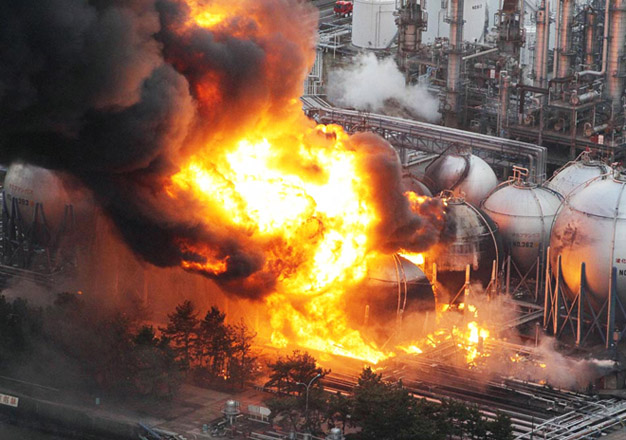3 Causes of Industrial Fire and Gas Explosions


Industrial fires and explosions cost companies and governments billions of dollars yearly. In 2017, an average of 37,000 fires occurred at industrial and manufacturing properties and resulted in 18 deaths and 279 injuries. A total amount of $1 billion was recorded in direct property damage alone. Here are three most common causes of industrial fires and explosions.
- Electrical Hazards
In manufacturing plants, examples of electrical hazards include exposed wiring, overloaded outlets, extensions cords, overloaded circuits and static discharge. As these items are a source of ignition for fires and explosions to occur, these hazards are dangerous without proper handling. Preventing electrical fire incidents include avoiding overloading electrical equipment or circuits, grounding equipment, switching equipment off when not in use and using antistatic equipment when required. Electrical accidents can cause second and third degree burns, and workplace electrical incidents has resulted in more than 300 deaths and 3,500 injuries yearly.
- Flammable Liquids and Gases
Flammable and combustible liquids and gases ignite and burn easily at normal working temperatures and are commonly found in plants and factories. As most of these liquids flow easily, a spill may easily result to a fire when they come in contact with combustible materials such as wood and fabrics in the workplace. On top of the harm caused by burns, these liquids and gases can cause health problems such as difficulty breathing, drowsiness, nausea and more. In 2017, the flammable or combustible liquid fires resulted in an estimated 454 civilian deaths, 3,910 civilian injuries, and $1.5 billion in direct property damage in the year.
- Combustible Dust
Combustible dust is a major cause of fire in industrial plants as they are highly flammable and act as a source of ignition for explosions to occur. As they are airborne, they can easily form dust clouds that may cause secondary explosions and worsen the damage caused. Preventing combustible dust incidents is done by ensuring that the dust is not accumulated to a dangerous level through proper housekeeping procedures.
Gas Explosion Hazards, Fire Detection and Protection Systems Design for Oil & Gas is a 3-day course held from 22 – 24 April and 24 – 26 April (Singapore) designed to provide an insight into the major drivers into fire and explosion hazard risk, and the various methods of preventing and mitigating such risk. The course will discuss quantitative consequence analysis, such as vapor dispersion modeling, vapor cloud explosion modeling, fire modeling, and presents the details necessary to perform such analyses. In addition, it will focus on the fire and gas detection systems for offshore and onshore process areas, and how such systems can be used to lower the overall explosion risk to facilities. The course will demonstrate how performance-based designs can be used to evaluate the effectiveness of a fire and gas detection system. For more information, please visit us at http://www.opuskinetic.com/training or contact us at info@opuskinetic.com.
Read more about how a Hazard and Operability (HAZOP) study also helps to identify and evaluate risks as well here: What is HAZOP?
Opus Kinetic believes that people are why organisations are successful, and giving people the knowledge to perform well at their job is integral for success. We pride ourselves as the premier provider of knowledge, offering acclaimed in-house trainings, and many others professional training courses spanning from various industries. Our training courses are well researched and updated with the latest industry trends. For more information on our professional training programs, visit us at http://www.opuskinetic.com/training.
